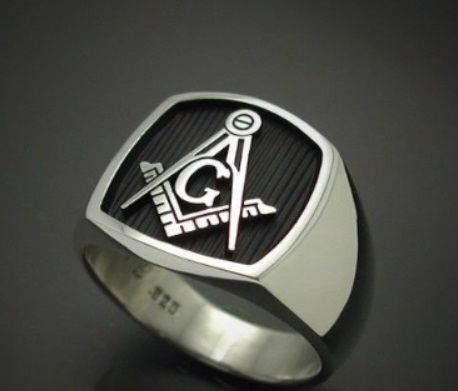Introduction
Masonic rings, which are often hidden with mystery and intrigue, have been awe-inspiring to numerous people for many centuries. They are exquisite jewels that do more than adorn the wrists of Freemasons but are also tangible representations of an ancient tradition dating to medieval stonemason’s guilds. In this piece, we’ll embark on an exploration of the complexities of Masonic rings and shed light on their origins as well as their significance and complicated symbolism they hold.
A Glimpse into Masonic History
To understand the significance of Masonic rings, one must start by exploring the past of the Freemasons. They are an ancient and secretive organization of Fraternity. The history of Freemasonry is hidden in mystery, and theories range from that of the Knights Templar to ancient Egypt. There is no definitive answer, which adds to the fascination of the Masonic trade.
Freemasonry is the way we think of it today. It was established around the end of the 16th and the early 17th century in England. It was a result of the Stonemasons’ associations that built the great castles and cathedrals in the Middle Ages. The stonemasons of the early days, referred to as active Masons, handed down their wisdom and customs utilizing secret symbols, rituals and passwords.
When the need for cathedral-building diminished, and with fewer opportunities available, many operative Masons started to welcome non-Masons in their group. It was a transition point from active to speculative Freemasonry, and the emphasis changed from the practical construction of the masonry craft to philosophy and moral doctrines.
Masonic Symbols and Their Significance
One of the most impressive aspects of Masonic rings is the intricate designs they display. Each symbol is entwined with significant significance and meaning within the Masonic tradition.
- Compasses and Squares: The Most well-known Masonic symbol, Compasses and squares, symbolize morality. The square represents sincerity and trustworthiness. Compasses are the limits we must place on our choices and desires.
- All-Seeing Eye: Sometimes depicted as an eye inside the shape of a triangle. This symbol is the eyes of God, the great architect of the Universe and the one who watches over the actions and thoughts of the human race. The emblem represents divine guidance and the significance of moral behavior.
- Gavel: The symbol of the gavel is the discipline and control that reminds Freemasons to control their behavior and emotions.
- Trowel: The trowel is the tool employed for spreading cement. In Freemasonry, it is a symbol of solidarity and love for one another, spreading love and peace.
The design and placement of the symbols in the Masonic ring may differ and allow every Freemason to select the ring that best reflects their beliefs and journey through the Fraternity.
The Brotherhood of Freemasonry
One of the most fundamental principles of Freemasonry is that of friendship. Masonic rings are visible evidence of this connection that binds Freemasons all over the globe. A band is a symbol of being a member of the Fraternity. It signals the other Masons that they’re fellow brothers with the same principles and beliefs.
Furthermore, Masonic rings are often decorated with the Freemason’s distinctive identity, referred to as”a “Masonic cipher.” This personalization gives a personal touch to the calls since each cipher is unique only to the individual wearing it. It is an indication of the person’s dedication to the Masonic values.
The Significance of Rituals
Rituals constitute a significant part of the process in Freemasonry, and Masonic rings are usually associated with these religious rituals. If a Freemason is presented with their Masonic rings, they are typically offered in an official ceremony. The circle symbolizes the wearer’s commitment to defending the Freemasonry principles and brings a sense of indescribable reverence for the occasion.
The Masonic rings are put on a specific cushion bearing Masonic symbols. The placement of the ring and ceremony’s content can differ in the various Masonic lodges and jurisdictions. Still, the purpose behind it is the same, which is to stress the importance and significance of the brotherhood.
Masonic Rings and Personal Connection
Individual Freemasons’ rings can be of immense personal meaning. It connects to an ancient and vast community, reminding wearers of their dedication to the Masonic values that promote moral and ethical conduct.
Additionally, it is also the case that the Masonic rings often become an essential family heirloom that is passed down through the generations. The ring transfer symbolizes the continuation of the Masonic tradition in a family. It emphasizes the significance of the Masonic values that they live by in their lives.
Choosing a Masonic Ring
Choosing a Masonic ring is a very individual decision. Several aspects are considered when deciding which ring to choose:
- Symbolism: Think about the Masonic symbols that appeal to you most. If it’s the square or compasses, the eye of all-seeing, or another character, pick a design which has meaning to the person you are.
- Metal and Style: Masonic rings can be purchased with gold, platinum, and silver.
- It can be minimalist and minimal or elaborate according to your personal preferences.
- Ring Size: Be sure to select the correct size of the ring to ensure a good size.
- Personal engravings: Many Freemasons decide to personalize their Masonic rings with their names, Masonic lodge, or additional essential details.
Conclusion
Masonic rings go beyond simply jewelry. They are an ode to a rich tradition that goes back into the past through time. The rings link Freemasons around the globe and serve as a reminder of their shared values and dedication to ethical and moral living.
If the Freemason wears their Masonic ring, They carry the burden of centuries of tradition and values of brotherhood morality as an improvement. This is a symbol of solidarity, passed on through generations, and an actual testimony to the eternal, mysterious nature of Freemasonry.

